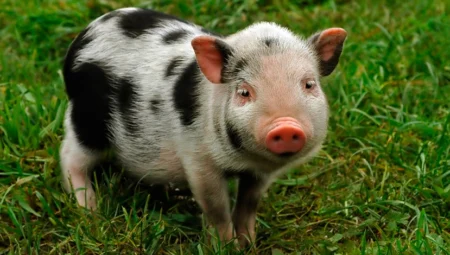Capybaras, often dubbed as the “world’s largest rodents,” have gained popularity in recent years as exotic pets. Native to South America, these semi-aquatic mammals belong to the genus Hydrochoerus and are closely related to guinea pigs. Renowned for their amiable nature and docile temperament, many animal enthusiasts consider keeping capybaras as pets. However, before welcoming one into your home, it’s crucial to understand their characteristics, care requirements, and the considerations associated with their ownership.
Understanding Capybaras:
Capybaras are characterized by their sturdy, barrel-shaped bodies, webbed feet, and a distinctive appearance that resembles a giant guinea pig. They typically weigh between 35 to 66 kilograms (77 to 146 pounds) and can reach lengths of around 106 to 134 centimeters (42 to 53 inches). Known for their social behavior, capybaras are highly gregarious animals that thrive in groups.
Feeding Habits:
In the wild, capybaras are herbivorous creatures with a diet primarily consisting of grasses, aquatic plants, fruits, and vegetables. When kept as pets, replicating this diet is crucial for their health. Owners often provide a combination of grass hay, fresh vegetables (like leafy greens), and a range of fruits. Maintaining a balanced diet is essential to ensure their nutritional needs are met.
Care Requirements:
Caring for capybaras requires substantial space and access to water. These semi-aquatic animals need a large outdoor enclosure with a pool or a water source substantial enough for swimming and soaking. Their enclosure should also include areas for grazing, shelter, and ample space for exercise.
Capybaras are social animals and typically thrive in the company of others. It’s often recommended to keep them in pairs or small groups to prevent loneliness and stress. However, proper introductions are essential, as capybaras can be territorial, especially in confined spaces.
Their maintenance involves regular grooming, veterinary check-ups, and a clean environment to prevent health issues. Additionally, providing mental stimulation through toys and activities can help keep them engaged and content.
Challenges of Ownership:
Owning a capybara comes with several challenges. First and foremost, these animals require specialized care, including access to veterinary professionals familiar with exotic species. Their social nature demands ample interaction and attention from their owners, making them unsuitable for individuals unable to dedicate significant time to their care.
Furthermore, regulations concerning capybara ownership vary widely by location, and acquiring permits or licenses may be necessary. Moreover, the initial cost of purchasing a capybara, along with ongoing expenses for their diet, enclosure maintenance, and healthcare, can be substantial.
While capybaras exhibit endearing traits and can form strong bonds with their owners, their ownership demands commitment, space, and resources. Before considering a capybara as a pet, prospective owners must thoroughly research their needs, understand local regulations, and ensure they can provide the necessary care and environment for these unique animals. With responsible ownership and proper care, capybaras can make fascinating companions for those equipped to meet their requirements.

Disadvantages of capybara feeding
Feeding capybaras, like any other animal, comes with its own set of considerations and challenges. While these creatures have specific dietary needs and preferences, there are certain disadvantages or difficulties associated with their feeding requirements:
1-Specialized Diet: Capybaras are herbivores with a diet primarily consisting of grasses, aquatic plants, fruits, and vegetables. Their dietary needs are quite specific, and it might be challenging to provide a varied and balanced diet consistently, especially in regions where certain vegetation may not be readily available.
2-Feeding Costs: Maintaining an adequate supply of fresh vegetables, high-quality grass hay, and fruits can be expensive. Capybaras consume a significant amount of food due to their size, and the cost of providing their dietary needs might be higher than anticipated for some owners.
3-Digestive Sensitivity: These animals have sensitive digestive systems. Sudden changes in their diet or feeding them inappropriate food items can lead to digestive issues like bloating, diarrhea, or other health complications. Owners must be cautious about introducing new foods and ensure a gradual transition when changing their diet.
4-Requirement for Fresh Produce: Capybaras require fresh produce daily. This means frequent trips to the market or the need for a consistent supply of fresh vegetables and fruits, which might not always be convenient for some pet owners.
5-Potential Dental Problems: Capybaras have continuously growing teeth, and their diet needs to include enough abrasive materials, like grass and hay, to help wear down their teeth naturally. Improper diet or lack of access to suitable chewing materials could lead to dental issues.
6-Hygiene Concerns: Uneaten food left in the enclosure can attract pests, insects, or cause contamination. Regular cleaning and monitoring of their feeding areas are necessary to maintain hygiene and prevent health issues.
In conclusion, while feeding capybaras can be fulfilling and rewarding, it requires careful attention to their dietary requirements, consistent sourcing of appropriate food items, and vigilance to ensure their health and well-being. Owners must be prepared to invest time, effort, and resources in providing a suitable and balanced diet to maintain the health of these unique animals.




